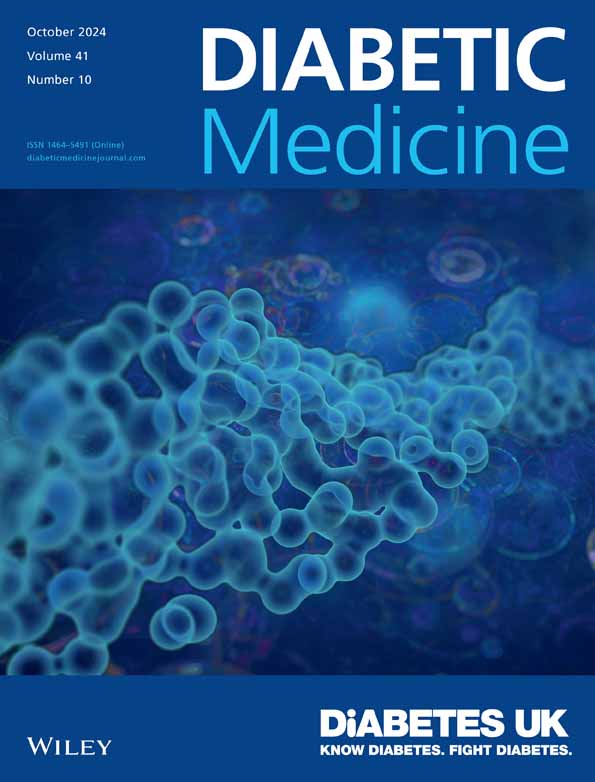Effect of switching from intermittently scanned to real-time continuous glucose monitoring on glycaemic outcomes in adults with type 1 diabetes: A real-world, Canadian retrospective study
Abstract
Aims
This study investigated the real-world clinical outcomes of switching from intermittently scanned continuous glucose monitoring (isCGM) to real-time CGM (rtCGM) in adults with type 1 diabetes (T1D) from a large Canadian speciality care population.
Methods
This retrospective observational study examined data from January 1, 2018, through July 31, 2023, in the Canadian LMC Diabetes Registry. The analysis measured 6–12-month change in HbA1c in adults with T1D who switched from isCGM to rtCGM and compared changes to a propensity score-matched isCGM cohort. Changes in number of hypoglycaemic events, CGM metrics, body weight, and total daily dose (TDD) of insulin were also evaluated at 6–12-month follow-up.
Results
The full T1D rtCGM switch cohort comprised of 136 adults (mean: age 43 years, diabetes duration 20.9 years, baseline HbA1c 67 mmol/mol [8.2%]). For the full cohort, HbA1c was significantly lower at follow-up compared to baseline (∆-7 mmol/mol [∆-0.6%], p < 0.001). The propensity score-matched subset (n = 84) of these participants had a greater HbA1c reduction compared to the matched isCGM cohort (n = 84; adjusted mean difference, 5 mmol/mol [0.5%]; p = 0.002). The matched rtCGM switch subset had significantly higher time in range 3.9–10.0 mmol/L and lower time above range >10.0 mmol/L, time below range <3.9 mmol/L, and mean glucose compared to the isCGM cohort. There were no significant differences in hypoglycaemic events, body weight, and insulin TDD between the matched cohorts.
Conclusions
This real-world analysis of adults with T1D showed that switching from isCGM to rtCGM use led to significant improvements in HbA1c and CGM metrics.


 求助内容:
求助内容: 应助结果提醒方式:
应助结果提醒方式:


